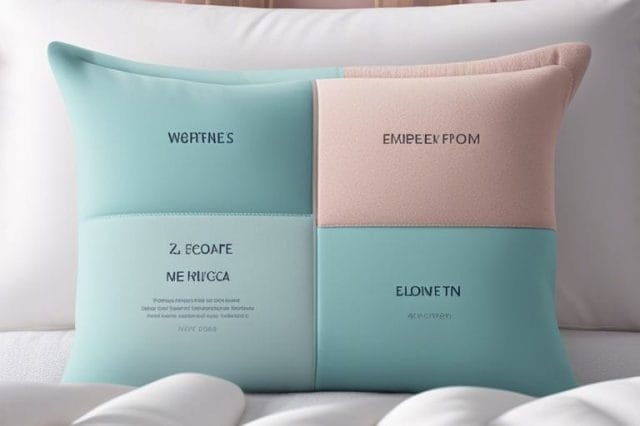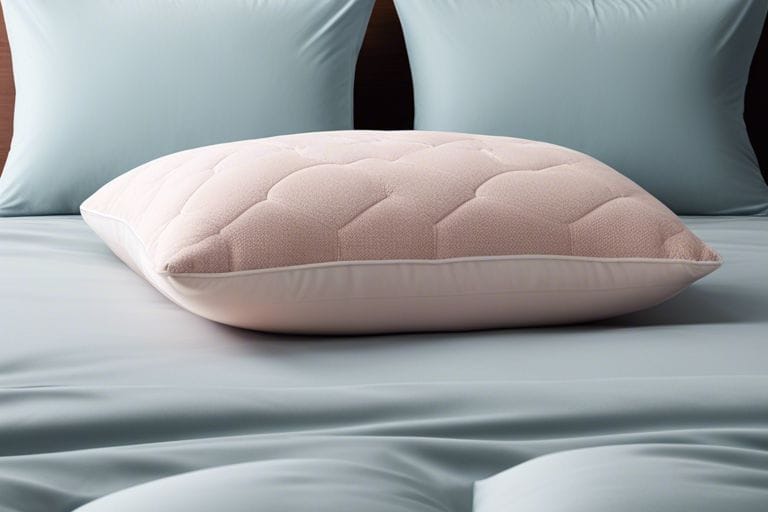Over time, pillow cores have become an important component of our everyday lives, offering both comfort and support during sleep. The pillow core serves as the foundation of a pillow, providing structure and shape to ensure a restful night’s sleep. Understanding the importance of pillow cores can help individuals make informed decisions when selecting the right pillow for their needs. In this blog post, we will explore into the world of pillow cores to explore their various types, materials, and roles in ensuring a comfortable and rejuvenating sleep experience.
Key Takeaways:
- Pillow Core Definition: The pillow core is the filling inside a pillow that provides support and comfort.
- Types of Pillow Cores: Common types of pillow cores include feather, down, memory foam, latex, and polyester fiberfill.
- Role of Pillow Core: The pillow core plays a crucial role in determining the level of support, comfort, and durability of a pillow, making it imperative to choose the right type for your needs.

Understanding Pillow Core Materials
Even Foam Core Pillow pillows utilize different materials to provide comfort and support. When deciding on a pillow, it is crucial to understand the various types of pillow core materials available in the market.
Types of Pillow Filling Materials
- Memory Foam: Contours to the shape of your head and neck, providing excellent support.
- Down Feather: Soft and luxurious, offering a plush feel but less support.
- Latex: Firm and durable, great for those needing more support.
- Polyester: Affordable and hypoallergenic, but may lose shape over time.
- Microbeads: Moldable and supportive, ideal for customizable comfort.
Recognizing your sleeping preferences and any specific neck or back issues you may have will help determine the most suitable pillow core material for you.
Advantages and Disadvantages of Each Type
An in-depth look at the materials used in pillow cores reveals a variety of pros and cons. Memory foam provides excellent support but may retain heat, whereas down feathers offer luxurious comfort but may flatten over time. Latex pillows are durable and supportive but can be expensive. Polyester pillows are affordable and hypoallergenic but may lack longevity, while microbead pillows are moldable and customizable but may shift during the night. Choosing the right pillow core material depends on balancing these advantages and disadvantages to find the perfect fit for your needs.

Design and Construction of Pillow Cores
Ergonomics and Pillow Shapes
It is important to consider ergonomics and pillow shapes when designing pillow cores. The right pillow shape can provide proper support to the neck and head, promoting a healthy sleeping posture. It is important to choose a pillow core that aligns with your body’s natural curvature to prevent neck and back pain.
Technology and Innovation in Pillow Core Design
Design plays a crucial role in the technology and innovation of pillow core construction. Technology advancements have allowed for the creation of pillow cores that incorporate memory foam, cooling gel, and adjustable firmness settings. These advancements aim to enhance comfort, support, and breathability for a better night’s sleep.
Technology has revolutionized the way pillow cores are manufactured, with a focus on improving sleep quality and overall health. Innovative features such as temperature regulation, noise reduction, and hypoallergenic materials have set a new standard for pillow core design, prioritizing the user’s well-being.
Maintenance and Longevity of Pillow Cores
Proper Care for Different Pillow Cores
Not all pillow cores are created equal, and as such, they require different care to ensure their longevity. Whether you have memory foam, down, or synthetic filling, it is imperative to follow the care instructions provided by the manufacturer to maintain the quality and comfort of your pillow.
Signs of Wear and When to Replace Your Pillow
Maintenance of your pillow core is crucial in ensuring a good night’s sleep and avoiding any health issues. Different pillow cores have varying lifespans, but there are common signs that indicate it’s time to replace your pillow. Make sure to check for lumps, flatness, or an unpleasant odor, as these can affect the support and hygiene of your pillow.
Maintenance: Over time, pillows can accumulate dust mites, allergens, and bacteria, which can impact your health and sleep quality. It is recommended to replace your pillow every 1-2 years, or when you notice signs of wear, to maintain a healthy sleep environment.
Longevity: The most important aspect of pillow longevity is ensuring proper care and regular maintenance. By following the manufacturer’s instructions for cleaning and fluffing your pillow, you can prevent premature wear and extend its lifespan. Investing in a high-quality pillow and replacing it when necessary will positively impact your sleep quality and overall well-being.

Health and Environmental Considerations
Health Benefits of a Quality Pillow Core
Your quality of sleep is closely tied to the pillow you use. A good pillow core offers proper support for your neck and spine, which can help alleviate any discomfort or pain you may experience. With the right pillow core, you can improve your sleep quality and overall health.
Environmental Impact of Pillow Core Production
For the environmentally conscious consumer, it’s necessary to consider how your pillow core is produced. Pillow core production can have a significant impact on the environment, with processes such as chemical treatments and resource consumption contributing to pollution and waste. Opting for sustainably produced pillow cores, made from eco-friendly materials and utilizing environmentally friendly manufacturing methods, can help reduce your carbon footprint and promote a healthier planet.
Summing up
Drawing together the information presented, a pillow core is the inner filling of a pillow that plays a crucial role in providing support and comfort. The choice of pillow core material directly impacts the overall feel and quality of the pillow, influencing factors such as longevity, allergen resistance, and shape retention. Understanding the different types of pillow cores and their characteristics can help individuals make an informed decision when selecting a pillow that suits their unique preferences and needs. Ultimately, the pillow core serves as the foundation of a pillow, contributing significantly to a good night’s sleep and overall well-being.
FAQ
Q: What is a pillow core?
A: A pillow core, also known as a pillow insert, is the inner part of a pillow that provides support and shape. It is typically made of materials such as feathers, down, polyester fibers, or memory foam.
Q: What is the role of a pillow core?
A: The pillow core plays a critical role in determining the comfort and support level of a pillow. It provides the foundational structure for the pillow, ensuring that it maintains its shape and supports the head and neck appropriately during sleep.
Q: How does the pillow core impact sleep quality?
A: The quality of the pillow core directly affects the quality of sleep. A supportive and well-structured pillow core can help alleviate neck and back pain, promote proper spinal alignment, and contribute to a more restful night’s sleep.

